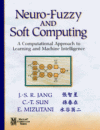Taught: Fall 2001, Fall 2003, Fall 2005

Oakland University, Michigan, USA

Description
We present in this course a detailed introduction to the theory and terminology of fuzzy disciplines and adaptive environments. We explain the concepts of fuzzy sets, fuzzy rules, fuzzy inference systems and fuzzy reasoning. We also provide an overview of model (or system) identification and optimization techniques which are used in neural-fuzzy systems. We will tackle the adaptive neural networks, supervised learning, learning from reinforcement and the unsupervised learning.
Least-squares methods will be introduced for model identification. We introduce nonlinear optimization using derivative-based techniques such as gradient and derivative free techniques such as genetic algorithm, simulated annealing, downhill simplex method and random search.
Some practical problems that involve fuzzy and adaptive systems will be solved by the students during this course.

Textbook
Jyh-Shing Roger Jang, Chuen-Tsai Sun and Eiji Mizutani, Neuro-Fuzzy and Soft Computing: A Computational Approach to Learning and Machine Intelligence, First Edition, Prentice Hall, 1997.

Course Materials